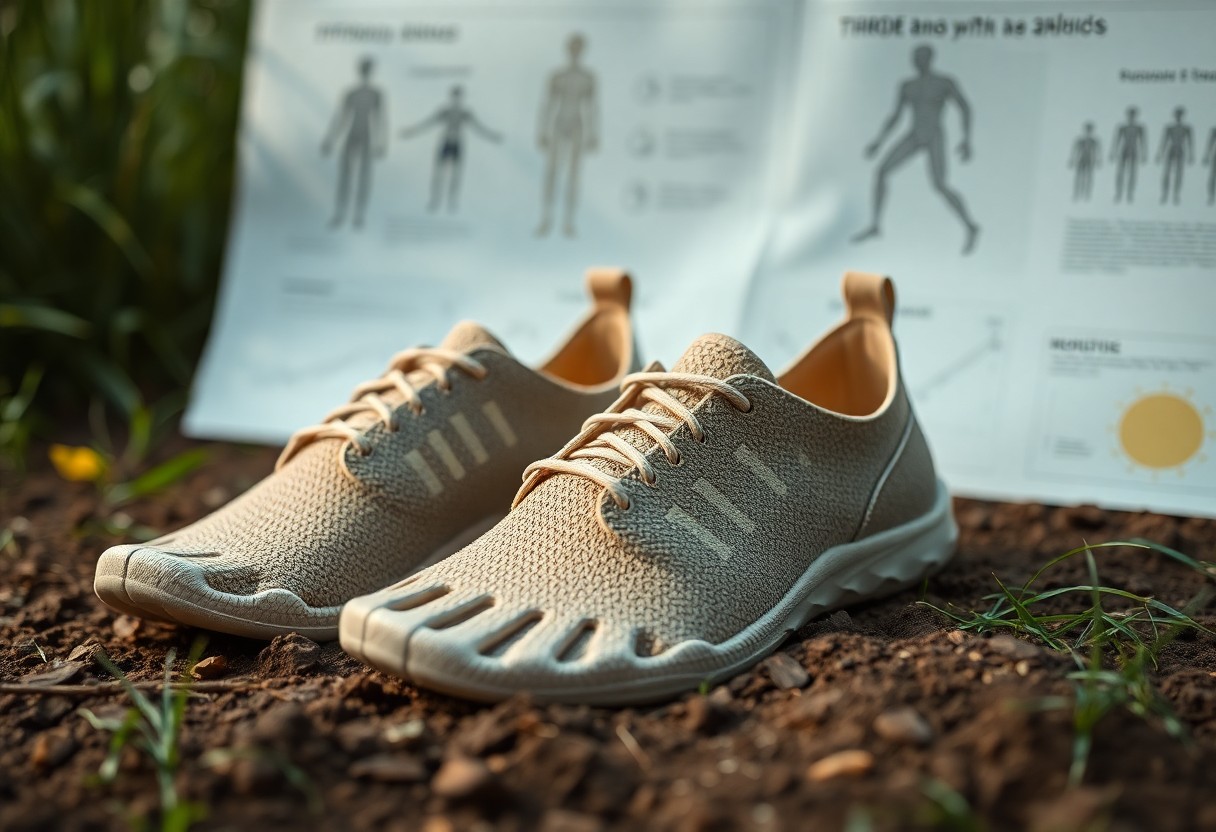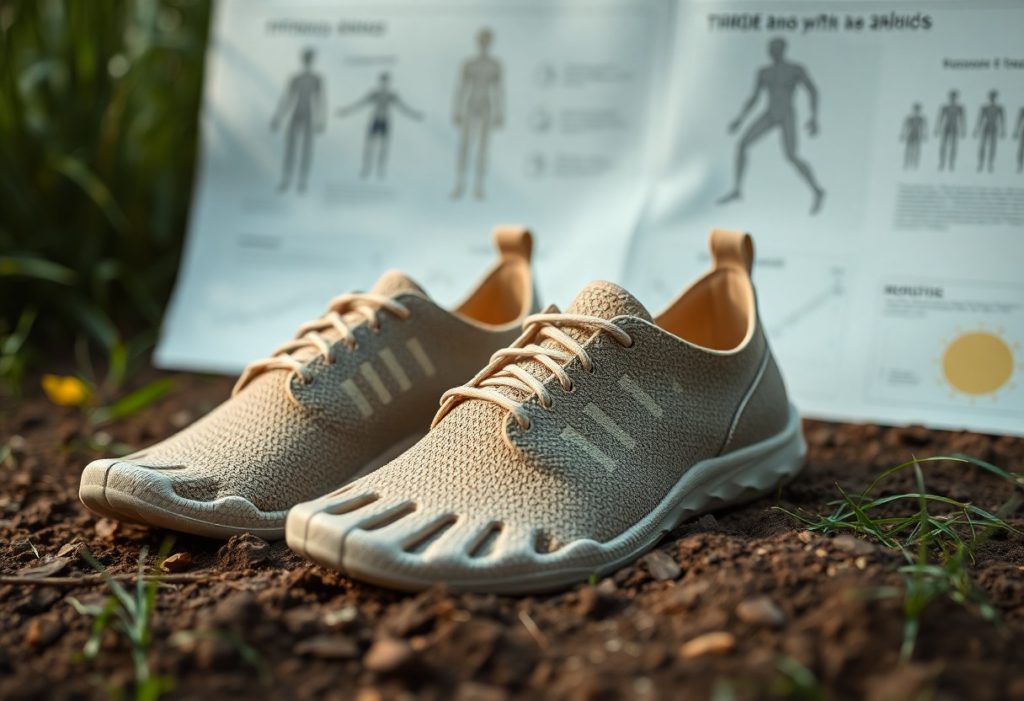Adopting sustainable design principles in footwear is not just about minimising waste; it also plays a crucial role in enhancing foot health. Barefoot shoes are leading a transformative movement in the industry, significantly reducing CO₂ emissions through the utilisation of cutting-edge materials and efficient manufacturing processes. Choosing these environmentally friendly designs means you are actively participating in shaping a future where biomechanical optimisation aligns with environmental accountability. Join the ever-growing community that champions footwear which not only supports your physical wellness but also nurtures our planet. In-depth lifecycle assessments reveal that minimalist shoe designs can drastically decrease your carbon footprint, creating a beneficial impact on your health and the environment alike.
Revolutionising Footwear Production for a Greener Future
To effectively transform footwear production, it is imperative to implement innovative strategies that significantly reduce the environmental footprint associated with this sector. Given the footwear industry's considerable contribution to global CO₂ emissions, embracing sustainable practices that prioritise ecological balance while protecting consumer health is essential. By concentrating on advanced material sourcing, optimising manufacturing processes, and establishing comprehensive end-of-life management strategies, the footwear sector can make substantial strides in diminishing its carbon impact. This shift not only serves the environment but also responds to the increasing consumer demand for sustainable and responsible products.
Utilising Advanced Materials to Promote Ecological Sustainability
Progressive brands are proactively embracing innovative material technologies to substantially lessen their environmental impact. For instance, Xero Shoes’ dedication to using materials like hemp and recycled PET achieves a remarkable 32% reduction in production emissions while resonating with the growing consumer desire for sustainable products. This strategic approach not only safeguards local ecosystems but also fosters a circular economy by actively minimising waste throughout the production lifecycle. By prioritising these sustainable materials, brands can enhance their commitment to environmental stewardship while appealing to a discerning consumer audience.
Conducting Lifecycle Analyses to Uncover Carbon Footprint Reductions
Implementing thorough lifecycle analysis is vital for accurately evaluating the total carbon footprint of footwear products. By scrutinising every stage—from material sourcing and manufacturing to usage and final disposal—you can identify key areas requiring improvement. For example, emissions from barefoot shoes typically range from 10-20 kg CO₂e per pair, marking a significant 40% reduction compared to conventional athletic footwear. Initiatives like Vivobarefoot’s ReVivo programme, which extends the lifespan of shoes and decreases emissions to only 5.8 kg CO₂e, underscore the notable advantages that sustainability measures can bring to production efficiency and consumer attraction.
Improving Foot Health through Biomechanics and Barefoot Shoe Design
The integration of biomechanics into the design of barefoot shoes significantly amplifies the multitude of benefits linked to minimalist footwear, leading to enhanced foot health alongside sustainability. By prioritising natural foot movement, these shoes enable your feet to function as nature intended, resulting in improved posture and a decreased likelihood of injuries. The lightweight nature of barefoot shoes also fosters a more efficient gait, making each step feel more comfortable and less taxing on your body. This harmony contributes to both personal and ecological well-being, as each step taken in these shoes reflects a commitment to health and sustainability.
How Minimalist Designs Enhance Gait and Movement Efficiency
Minimalist designs present in barefoot shoes facilitate a natural gait that encourages midfoot or forefoot striking patterns. Such modifications can significantly alleviate the impact force on your joints, resulting in a more efficient and pleasurable walking or running experience. By eliminating excessive cushioning and support, these shoes allow your foot muscles to engage fully, thereby strengthening the intrinsic musculature vital for optimal movement. This natural approach to footwear not only enhances your physical capabilities but also nurtures a deeper connection with the ground, enriching your overall physical activity.
Exploring Energy Efficiency in Movement: Insights from Scientific Research
Recent scientific investigations underscore the essential role of energy efficiency in the performance of barefoot shoes. Studies reveal that runners clad in barefoot footwear experience a notable enhancement in energy return and propulsion mechanics, leading to decreased fatigue and a more sustainable running style. This directly benefits your movement efficiency during extended activities, making each step more effective. Improved energy efficiency is fundamentally rooted in the meticulous design of barefoot shoes, which supports superior biomechanics. For example, trials involving 15 participants demonstrated that those wearing minimalist shoes featuring algae-foam materials reported an energy return rate of 89% compared to merely 82% for traditional EVA foams. This dynamic nature of barefoot footwear allows for a more natural range of motion, significantly relieving knee loads during various activities. By harnessing these advantages, barefoot shoes emerge as not only an environmentally friendly choice but also an innovative solution for achieving optimal energy efficiency in motion.

Consumer Insights: Understanding the Growing Demand for Sustainable Footwear
Understanding consumer motivations is crucial for promoting the widespread acceptance of sustainable footwear. Today’s shoppers increasingly value ecological and health benefits, gravitating towards products that fulfil their functional needs while aligning with their personal values concerning environmental responsibility and overall well-being. As consciousness regarding sustainability grows, consumers are actively seeking footwear brands that embody these principles.
Identifying Trends and Preferences Among Eco-Conscious Consumers
As sustainability becomes a fundamental value, eco-conscious consumers are increasingly on the lookout for footwear brands that resonate with these ideals. Recent data indicates that 43% of shoppers are willing to pay a premium of 30% for sustainably produced shoes, highlighting a significant shift in consumer priorities towards eco-friendly materials and practices. This trend underscores the escalating importance of sustainability as a central factor in purchasing decisions, motivating brands to embrace more responsible production methods.
Comprehending the Value of Sustainability in Footwear Choices
The perceived value of sustainability in footwear is not merely a fleeting trend; it is a fundamental element of purchasing decisions. As a consumer, you may find yourself influenced by environmental concerns, health advantages, and durability assurances, with research showing that perceived environmental benefits rank highest among consumer motivations. By choosing sustainable footwear, you are contributing to a broader movement towards responsible consumption, which resonates with many buyers today.
This growing awareness of environmental impact indicates that consumers appreciate brands that emphasise sustainable features. Such perceptions of value foster stronger brand loyalty and can amplify the effects of your purchasing decisions, encouraging manufacturers to invest in greener practices and materials. Essentially, sustainability enhances the perceived worth of a product, aligning your decisions with larger environmental objectives while effectively addressing your footwear needs.
Understanding the Regulatory Framework for Sustainable Footwear Innovation
The constantly evolving regulatory landscape plays a vital role in steering the footwear industry towards sustainable innovation. With heightened scrutiny on carbon emissions and ecological degradation, new regulations are emerging to promote greener practices within manufacturing processes. Complying with these new mandates not only addresses urgent environmental issues but also aligns with consumer expectations, urging brands to innovate responsibly and transparently while adhering to compliance standards.
Understanding Compliance Regulations: Catalysing Sustainable Practices
New compliance regulations, especially within the European Union, are laying the groundwork for sustainable practices across the footwear sector. By 2027, regulations will mandate a minimum of 20% recycled content in footwear materials, while carbon labelling will become obligatory for all athletic shoes by 2026. These guidelines challenge brands to re-evaluate their material sourcing, production techniques, and end-of-life strategies, ensuring greater accountability and ecological stewardship within the industry.
Harnessing Innovation through Regulation: Navigating Opportunities and Challenges
While new regulations pose various challenges, they simultaneously unlock innovative opportunities for brands willing to adapt. Embracing compliance mandates drives companies to invest in sustainable technologies, developing solutions that reduce carbon footprints while enhancing overall product performance. For instance, brands are exploring biodegradable materials and advanced manufacturing techniques that can lead to improved durability and diminished waste. However, navigating the complexities of regulatory compliance requires an agile approach, as organisations must balance sustainability objectives with market demands and cost considerations.
In light of these challenges, the regulatory landscape fosters a culture of innovation that spurs the development of new materials and processes. Adopting technologies like 3D printing and bio-based materials not only aligns with compliance requirements but also offers unique branding opportunities that resonate with environmentally conscious consumers. Brands willing to embrace these transformative changes will distinguish themselves in a competitive market, driving progress while adhering to strict environmental standards. By viewing regulation as an opportunity rather than a barrier, you can place your brand at the forefront of the sustainable footwear movement.
Imagining the Future of Footwear: Merging Technology with Sustainability
The intersection of technology and sustainability is transforming the footwear sector as we know it. As manufacturers utilise advanced materials and integrate smart features, the forthcoming generation of shoes promises enhanced performance while concurrently minimising environmental impact. Innovations such as 3D printing and intelligent systems are paving the way for designs that not only cater to your foot health requirements but also uphold ecological integrity. This dynamic evolution reflects a deepening commitment to merging functionality with environmental responsibility in the footwear industry.
Incorporating Smart Features in Footwear: Enhancing User Experience and Sustainable Benefits
Smart features embedded in footwear considerably enhance your experience while contributing to sustainability objectives. By incorporating sensors, these shoes can provide instant feedback on your gait, empowering you to optimise your performance and effectively reduce injury risks. Moreover, these innovations often employ eco-friendly materials, ensuring that your pursuit of athletic excellence aligns seamlessly with your aspiration to protect the environment.
Customised On-Demand Production: The Role of 3D Printing in Sustainable Footwear
On-demand production harnesses 3D printing technology to create shoes specifically tailored to your individual needs. This innovative method not only allows for a customised fit but also significantly lessens waste generated by conventional manufacturing processes. By utilising advanced 3D printing techniques, brands can produce footwear that accurately mirrors individual foot dimensions based on pressure mapping and other biometric data. This level of personalisation reduces the chances of returns and excess inventory, with studies indicating a 73% reduction in waste through on-demand manufacturing practices. Furthermore, localised production diminishes transportation emissions and bolsters regional economies. As brands adopt this cutting-edge technology, you gain access to shoes that are not only better suited to your feet but also more environmentally sustainable.
Your Contribution to the Sustainable Footwear Movement
In essence, the innovations surrounding sustainable footwear are revolutionising the industry by aligning biomechanics with ecological responsibility in barefoot shoe design. By integrating minimalist footwear into your daily life, you can enhance your foot health while making a substantial reduction in your carbon footprint. Choosing shoes that prioritise sustainable materials and ethical manufacturing practices supports a significant shift towards a more environmentally conscious market. Embracing these advancements not only benefits you personally but also contributes to the overarching goal of planetary health, promoting a future where functionality and sustainability coexist in harmony.
The Article Sustainable Footwear Innovation: Bridging Biomechanics and Environmental Responsibility in Barefoot Shoe Design appeared first on My Shoes Finder
The Article Sustainable Footwear Innovation in Eco-Friendly Barefoot Design Was Found On https://limitsofstrategy.com








